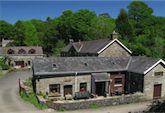PEAS
John Jenkins, keeping brief climate records at The Royal Institution of South Wales between 1843 and 1846 concluded that the climate in the Swansea Bay region was “highly conductive to the health of persons affected with pulmonary complaints and desirable for the residence of the valetudinarian.” In April 1980, it was reported that thousands of fresh garden peas pelted down in Tonna (nr Swansea) over a man called Trevor Williams in some freak weather phenomenon. John Jenkins was finally proved right. Holidaying in the Swansea region really is good for you! Despite the strange Welsh weather. [No vegetable forecasts available at time of writing]
Red sky at night, Shepherd’s delight.
Red sky in morning, Shepherd’s warning.
Red sky at night, Shepherd’s barn is alight.
Red sky in morning, Shepherd’s yawning.
HIGHEST RAINFALL
The summit of Snowdon has the highest rainfall in Wales, with an average of 180 inches (4,570mm) a year.
SUNNIEST AND WINDIEST
The exposed Dale peninsula in south-west Pembrokeshire is the sunniest place in Wales, with an annual average of over 1,800 hours. It’s also the windiest, with speeds of over 100 mph (160 kph) having been recorded.
HOT SPOT
The highest temperature ever recorded in Wales was 35.2ºC (95.4ºF) at Hawarden Bridge on 2 August 1990.
